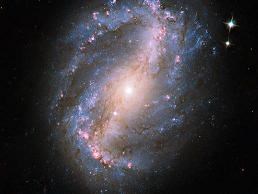|
"In the soft springtime the stars were glorious in our eyes each night before we fell asleep." Theodore Roosevelt 
NASA, ESA, and the Hubble SM4 ERO Team Theodore Roosevelt National Park is a great place to view the night sky. The park is over 30 miles from the nearest large city, so very little light interference affects night sky viewing allowing for better visibility of stars and other astronomical phenomena. On clear nights, the Milky Way, planets, stars, and many constellations are visible. The exceptional air quality in Theodore Roosevelt National Park also allows more astronomical features to be seen. In both units of the park, observers can drive to viewing areas on top of plateaus for a relatively unimpaired view of the night sky. Even without a telescope, you can experience the mystery and wonder of the night sky. Use a star chart and discover the constellations that inspired countless myths and legends. See the moons of Jupiter through your binoculars as Galileo did. Lie on your back and watch for satellites or make a wish on a shooting star. You can even see the Andromeda Galaxy without a telescope. The park is an excellent place to watch meteor showers. Occasionally, the Northern Lights or aurora borealis, may be visible, adding startling color and movement to the night sky. Theodore Roosevelt National Park is a great place to view the night sky, but, like other areas, there are threats to its relative darkness. Light pollution from oil and gas development surrounding the park is visible in some areas. Nearby towns including Medora, Belfield, and Watford City also produce light that limit the number of stars that can be seen. The farther you get from these sources of light pollution, the more astronomical features you will be able to see. Increased light pollution may have negative effects beyond the impacts to stargazing. Light pollution may affect the ability for nocturnal animals, such as some owls, to function normally. Artificial light "tricks" plants into thinking the days are longer than they are, which may affect their growth and reproductive cycles. Park rangers may offer programs about the night sky during the summer. Inquire at the visitor center or check park bulletin boards for information about programs currently being offered. Additional Resources: Lightscapes in the National Parks
|
Last updated: October 7, 2015
